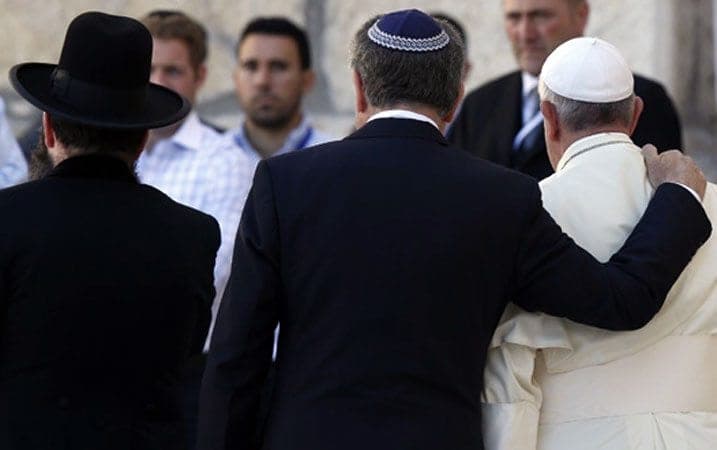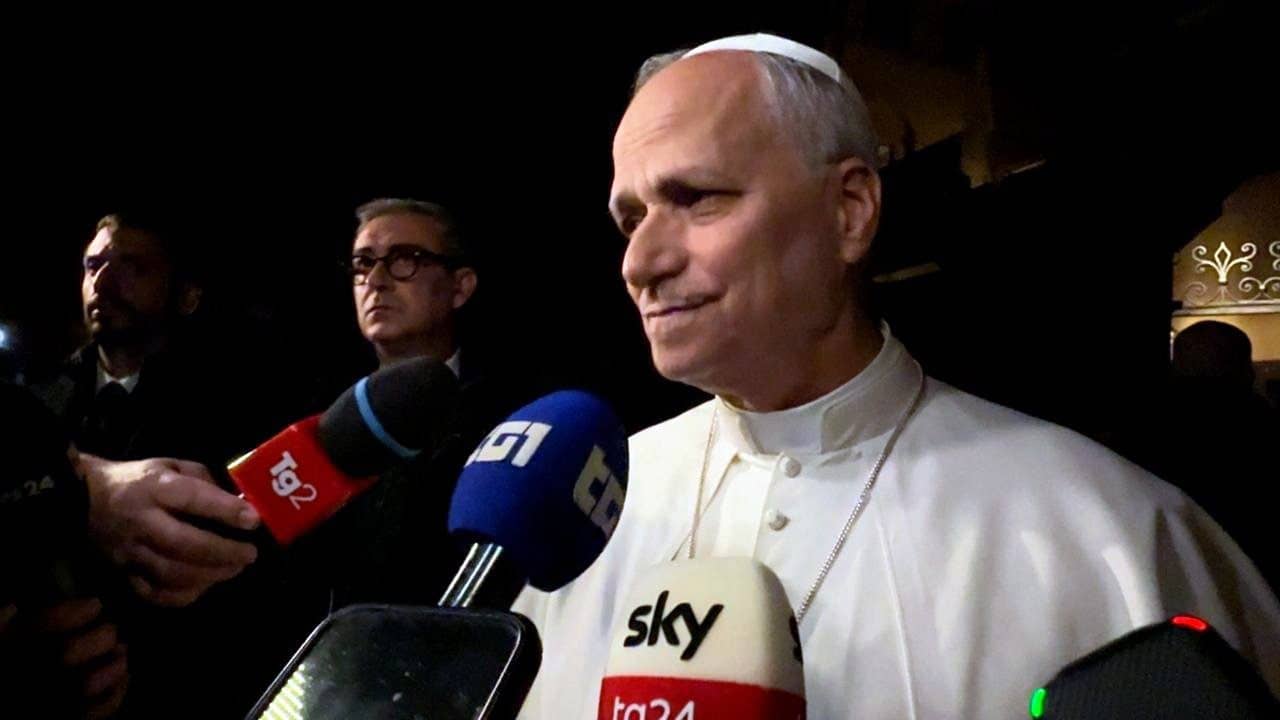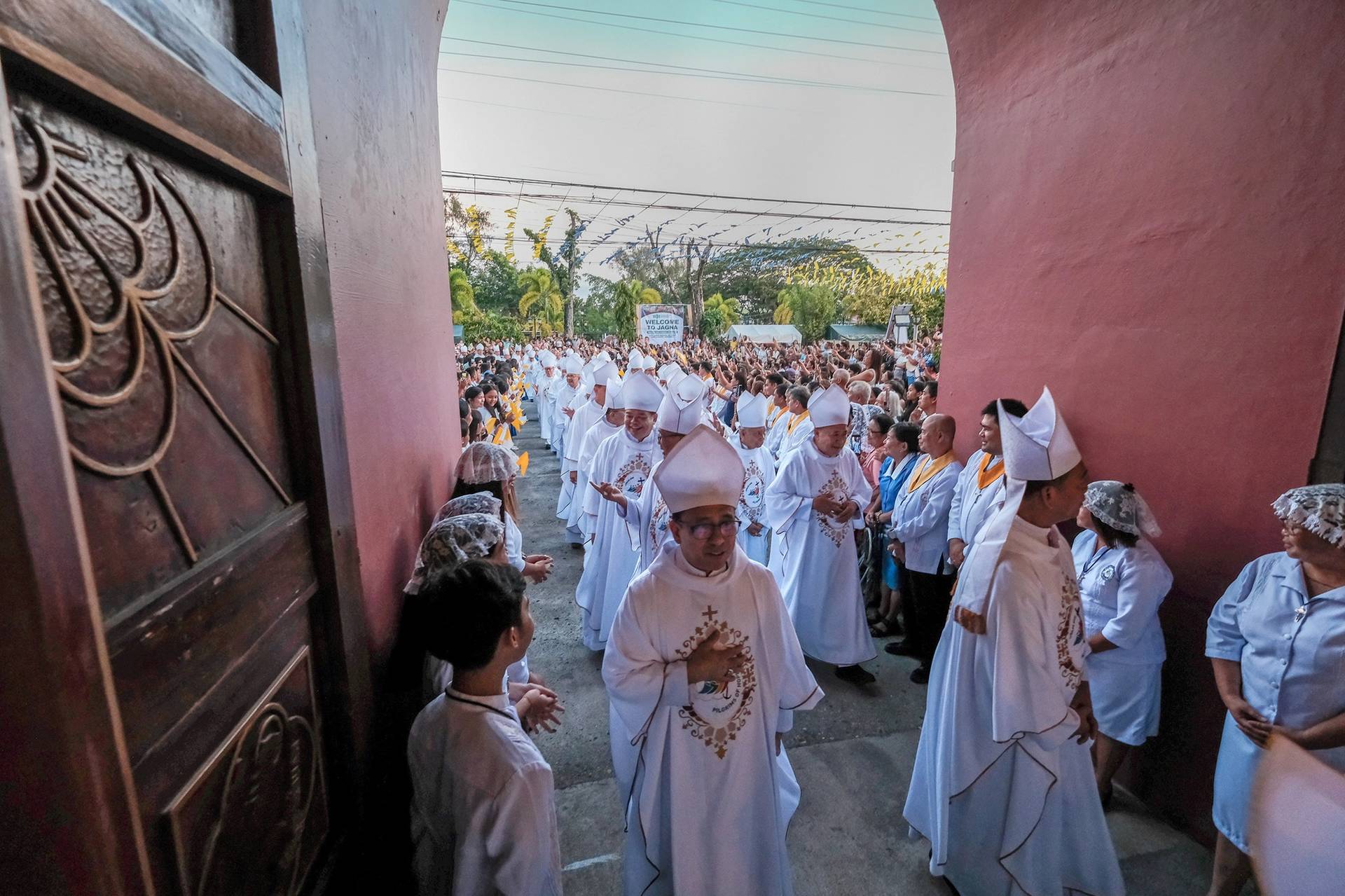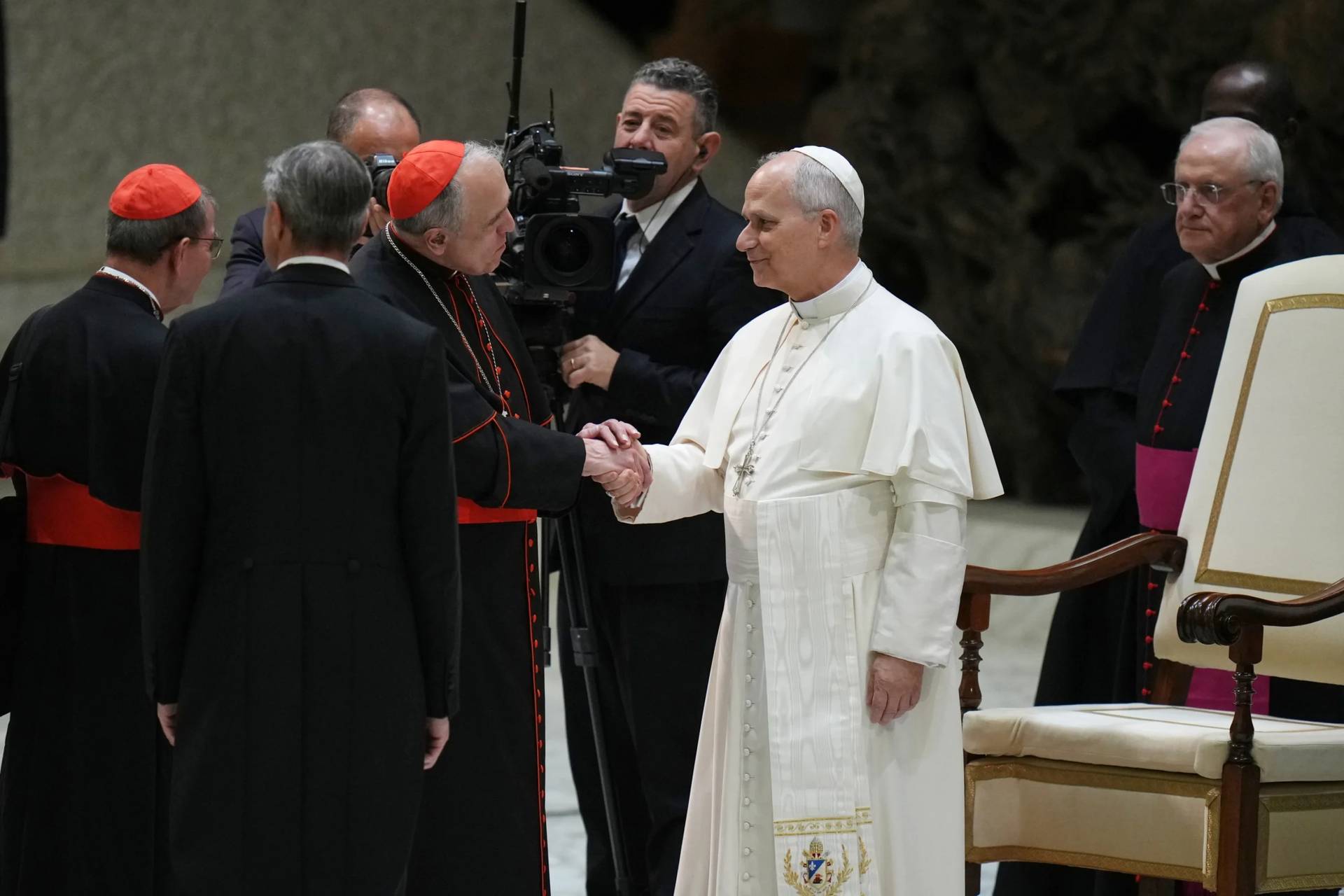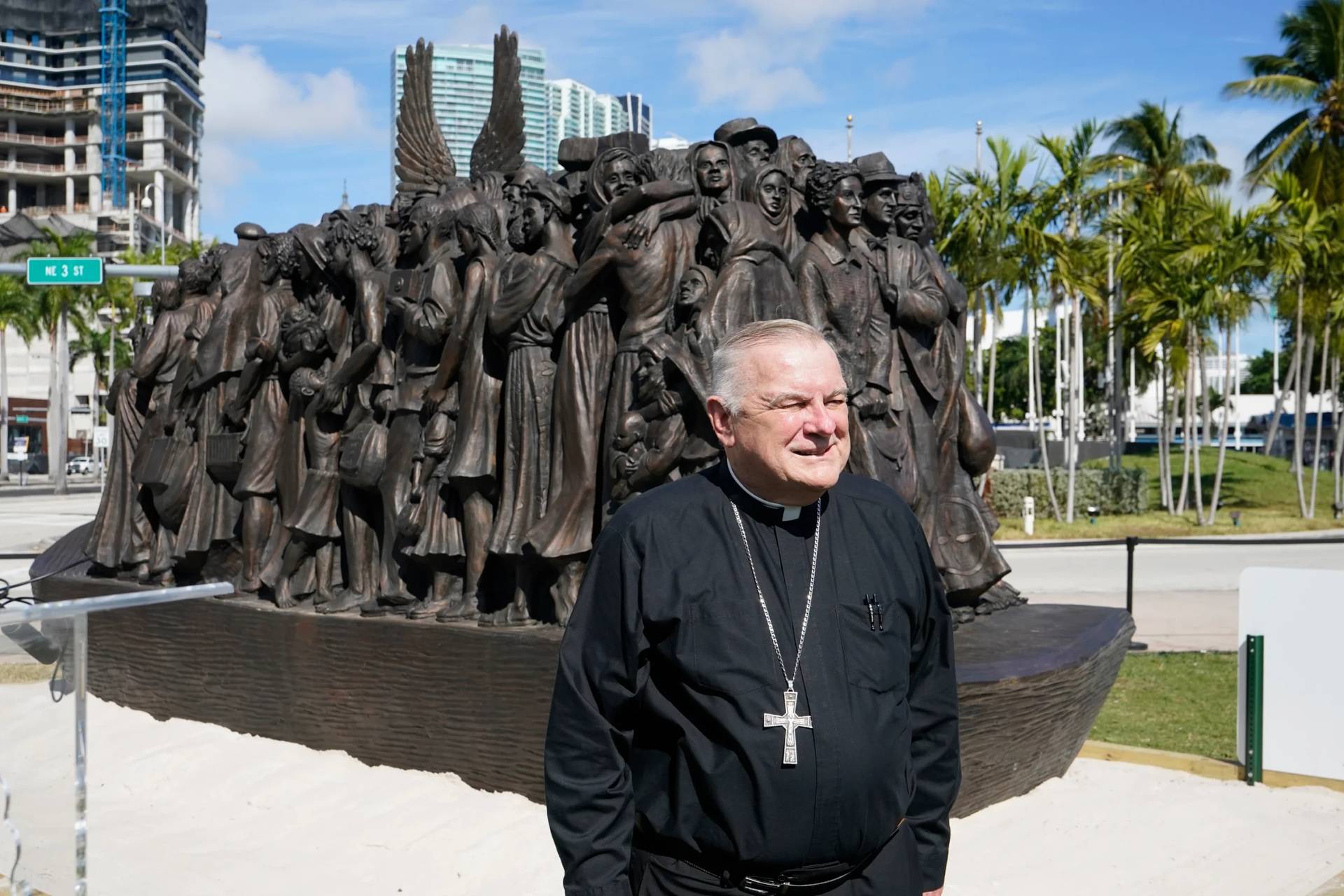On any list of the biggest religion stories of the 20th century, the positive revolution in Catholic-Jewish relations that unfolded post-World War II, accelerating after the Second Vatican Council in the 1960s, would have to finish near the top.
Sunday brings a reminder, as Pope Francis visits the Great Synagogue of Rome, becoming the third pontiff to do so after St. John Paul II in 1986 and Benedict XVI in 2010. Where the synagogue stands today was once inside a papally-imposed ghetto; today, popes arrive as invited friends.
These visits are always special, given that arguably no Jewish community has felt the sting of Catholic opprobrium more than the one in Rome. It’s enough to recall that in the Middle Ages, the rabbi of Rome was required to present a tribute to the chief of the city councilors each year, and in return got a ceremonial kick to the rump.
Though most experts say this is now a friendship nothing can derail, there are still flashpoints. As Francis goes to the synagogue, here’s a run-down of six issues in Catholic/Jewish relations.
Mission and conversion
Given how Jewish “refusal” to accept Christ long has been a staple of anti-Semitic propaganda, one priority for Jews in dialogue with Catholicism has been an acknowledgement that their covenant with God is still valid, so they shouldn’t be asked to convert.
The first part of that formula basically has been accomplished, as St. John Paul II declared that the Jewish covenant with God has “never been revoked.”
Operationally, Catholics don’t really have much problem with the second point, either. As a recent Vatican document put it, “the Catholic Church neither conducts nor supports any specific institutional mission work directed towards Jews.”
Yet Christianity is a missionary religion, convinced that Christ came for all. How to square that belief with restraint toward Jews remains a bit of a theological conundrum.
Israel and Palestine
Theologically, some Jews would like Catholicism to formally endorse Judaism’s claim to the land of Israel. Politically, they’d often settle for more sympathy in Israel’s conflict with the Palestinians.
Francis’ visit to the region in May 2014 was seen by some as a propaganda coup for the Palestinians, including an unscheduled stop at the Israeli security barrier under a bit of graffiti reading “Free Palestine!” Last June, the Vatican signed a treaty with what it formally recognized as the “State of Palestine.”
The sociological reality is that the vast majority of Christians in Israel and Palestine are Palestinians, and most of the bishops are Arabs, meaning the strongest influence on any pope in thinking about the conflict will never be pro-Israeli.
In the Francis era, too, not allowing Catholic/Jewish ties to be hijacked by politics remains a challenge.
Economic agreement
Israel and the Vatican have had diplomatic relations since 1993, and ever since, they’ve been working on a deal on the tax and legal status of Church properties. Every few months someone predicts a breakthrough, but so far no dice.
On the Vatican side, some suspect Israel is dragging things out in order to create “facts on the ground”; on the Israeli side, some believe the Vatican is trying to use its muscle to extort privileges not afforded to other religious minorities.
Most Catholics and Jews involved in dialogue would say the stalemate is just an irritant within a healthy relationship — but an irritant it would be good to remove quickly.
Pius XII
Debates over whether the wartime Pope Pius XII was sufficiently outspoken on the Holocaust — including a 1943 Nazi round-up of Jews from the Roman community Francis is visiting on Sunday — still swirl, especially in terms of whether Pius will be proclaimed a saint.
One shoe waiting to drop is the full opening of the Vatican’s archives from the war years, allowing researchers to better assess Pius’ record. In November 2014, Francis said he would like to see the archives opened “the moment we sort out legal and bureaucratic matters.”
Francis has also insisted that Pius can’t be judged according to today’s standards, and that “it really gets my goat when I see that everyone is against the Church, against Pius XII — all those detractors.”
Jubilee rhetoric
Francis has designated 2016 as a jubilee Year of Mercy, and in the abstract it’s hard to see who could oppose mercy. Yet Riccardo di Segni, the chief rabbi of Rome, has expressed concern that jubilee rhetoric could revive anti-Semitic stereotypes, principally that the Old Testament God is harsh and vindictive while Christianity is loving and merciful.
“It’s an antique theological aberration, which has remained a sort of childhood disease of Christianity,” he said.
Di Segni stressed he doesn’t believe that’s how Francis intends it, but worries it could come off that way to an “unprepared public.”
Taking it to the people
While Jewish leaders say the revolution in official Catholic attitudes has been remarkable, many worry it hasn’t fully reached the parish level — especially outside the West, where one can still find openly anti-Semitic prejudices in some Catholic circles.
In Israel, Catholics sometimes complain that the new spirit doesn’t have an echo in the popular media or school curricula, where depictions of Christianity can pivot on the Crusades, the Inquisition, and the Holocaust, without noting recent progress.
Both sides, then, need to ensure their friendship reaches the people.
* * * * *
An imaginative jubilee gesture with St. Maria Goretti
Speaking of the jubilee Year of Mercy, one of the more imaginative gestures intended to bring it down to the popular level has come in the Italian diocese of Latina-Terracina-Sezze-Priverno.
Its principal claim to fame is that it’s the home of St. Maria Goretti, the youngest saint ever canonized in modern times.
She was born in 1890 to a family of farmers, so poor that they moved around a good deal in search of work. By the time she was 11 in the year 1902, they were living in a town called Le Ferriere, in a building called Cascina Antica or “Old Farmhouse,” which they shared with another family.
One day Maria was attacked by a teenage member of that family named Alessandro Serenelli. He planned to rape her, and, when she resisted, he became so enraged that he stabbed her with a knife 14 times. A surgery without anesthesia failed to save her, and she died 24 hours after the assault.
Maria forgave Alessandro on her deathbed, saying she hoped to have him with her in Heaven, and he would later report that she appeared to him in a vision to give him 14 lilies, representing the number of times she’d been stabbed.
Years later, after he was released from prison, Serenelli asked forgiveness from Maria’s mother, and he eventually attended Maria’s canonization Mass in 1950. Serenelli went on to became a Capuchin lay brother, working as a receptionist and gardener in a friary in Italy’s Le Marche region until he died in 1970.
(He generally stayed out of the limelight, though he released a statement before his death calling Maria “my light and my protector” and saying that he looked forward to being close to her and her mother in the afterlife. He also blamed his youthful crime in part on negative media influences, including the press and the popular entertainment of his day — and bear in mind, this was 1902.)
Italian Bishop Mariano Crociata now leads the Italian diocese in which the Goretti family lived. He’s declared Maria’s house, which has become a pilgrimage site, as a “jubilee church” for purposes of the holy year.
That means people who pass through its holy door can obtain the same plenary indulgence they would get from going through the holy door of the local cathedral or St. Peter’s Basilica and performing other prescribed acts. (A “plenary indulgence” means a remission of punishment due to sin.)
All sorts of VIPS have come to Le Ferriere to pay homage to Goretti’s memory over the years, including popes, Mother Teresa, and Chiara Lubich, the founder of the Focolare movement. Presumably, many will do so again during the jubilee year.
Recently, Crociata led the rite of formally opening the jubilee door in the presence of a large group of faithful and a delegation of Passionist priests, the order with which she’s linked, since a Passionist gave her First Communion. Her remains are located in a Passionist church in Nettuno, Italy.
Holy doors during jubilee years are typically found in churches, although the bull decreeing the jubilee year specified that bishops could also authorize them in shrines and pilgrimage destinations. This may, however, be the only “old farmhouse” to receive the designation.
It’s an imaginative gesture for three reasons.
First, Goretti’s story is all about forgiveness and its power to heal, a core part of the message Francis wants his Year of Mercy to get across. Few examples better illustrate the point than Goretti’s.
Second, it shines a spotlight on a saint who was female, therefore obviously not a priest, and young. Women, laity, and youth are all significantly under-represented in the rolls of formally canonized saints of the Catholic Church.
Third, it’s a reminder that mercy is not available only in church. It can spring up and change lives in the most ordinary and unlikely spots, which can be found almost anywhere. In other words, it makes a statement about the universality of mercy — not to mention that the clerical caste has no monopoly over it.
If one wanted to, one could be cynical about Crociata’s motives.
For one thing, designating the house as a jubilee site could be seen as a way to drum up tourist trade at a time when security fears across Europe have put a significant dent in one of Italy’s most important industries.
For another, it could be seen as a way for Crociata to boost his stock with Francis, since in December 2013, when Crociata stepped down as secretary general of the powerful Italian bishops’ conference, the pontiff did not assign him to a diocese that would normally put him in line to become a cardinal. It was taken as a sign that maybe Crociata wasn’t a Pope Francis kind of bishop.
(In truth, given the way Francis bypasses the normal centers of power in picking new cardinals, that logic was flawed from the beginning. In Italy at the moment, Venice and Turin don’t have cardinals, but Ancona and Agrigento do.)
Whatever the reasons, the fact remains that the Cascina Antica is one of the more striking and “on-message” holy sites associated with the jubilee year.
By the way, Bishop Marcello Semeraro of Alabano, the diocese where Nettuno is located, has also designated the room where Goretti died as a “jubilee church” where the plenary indulgence can be obtained.
